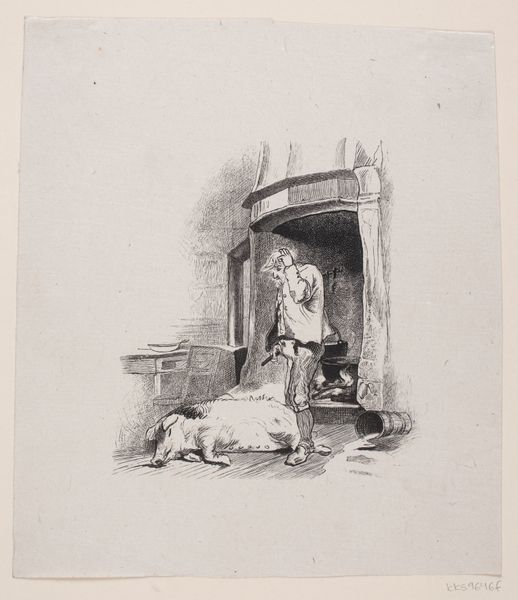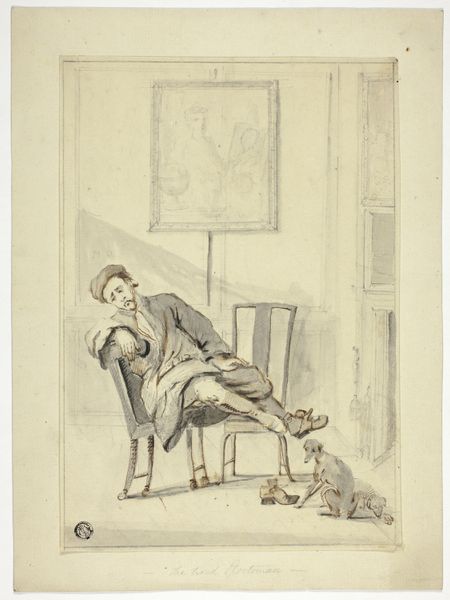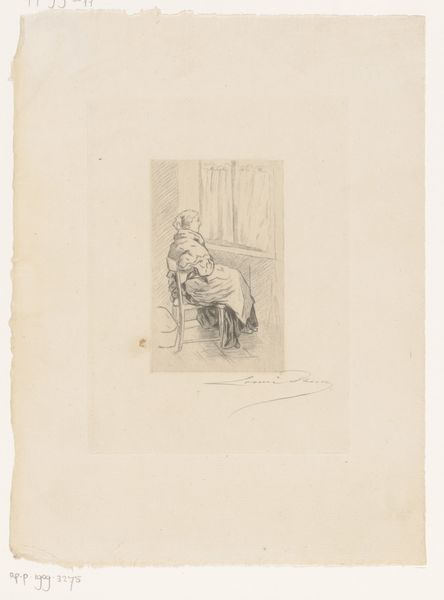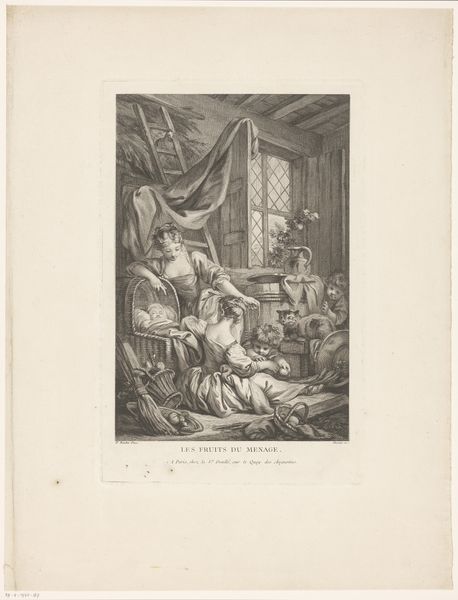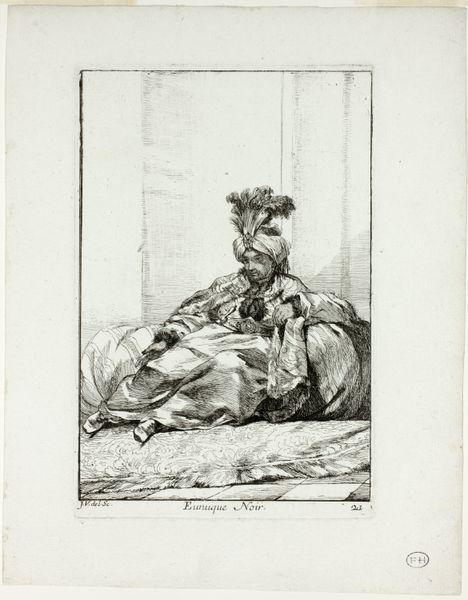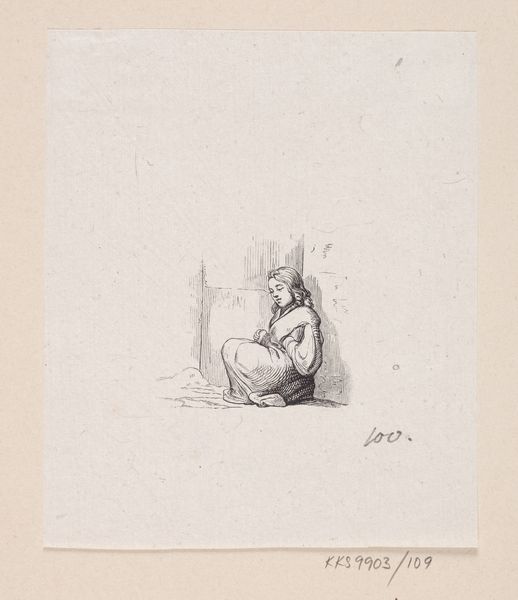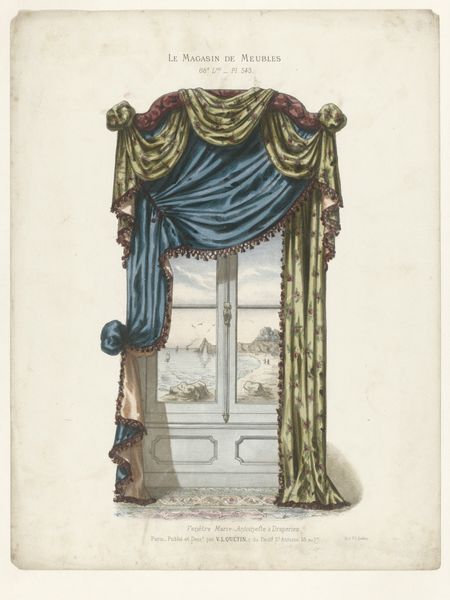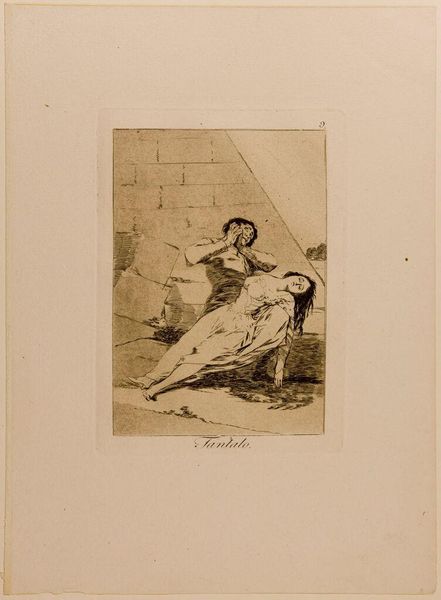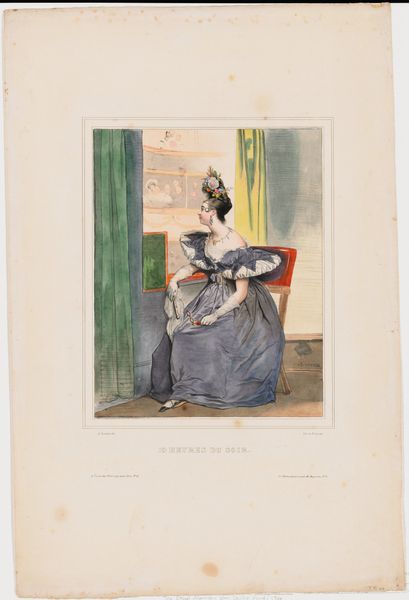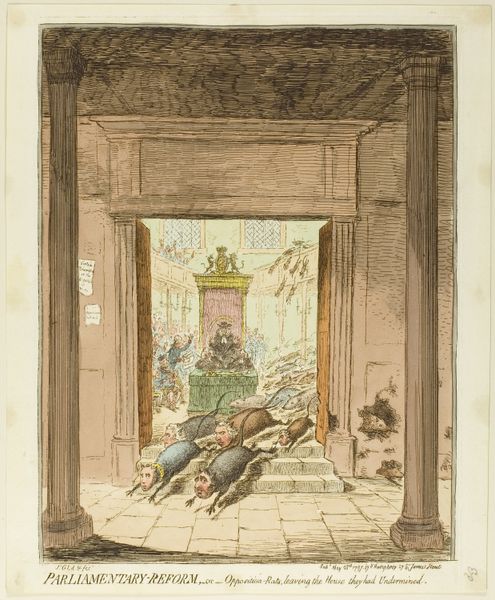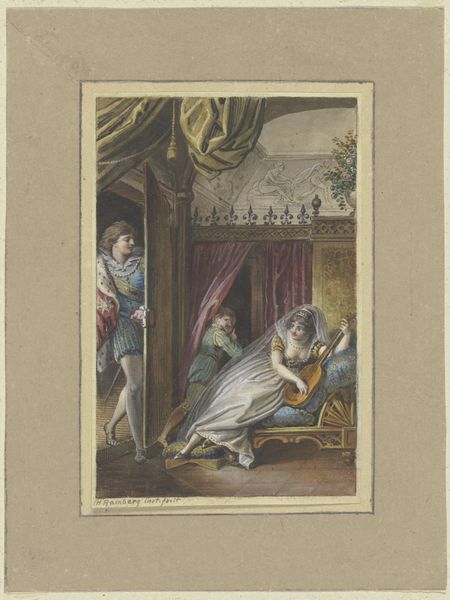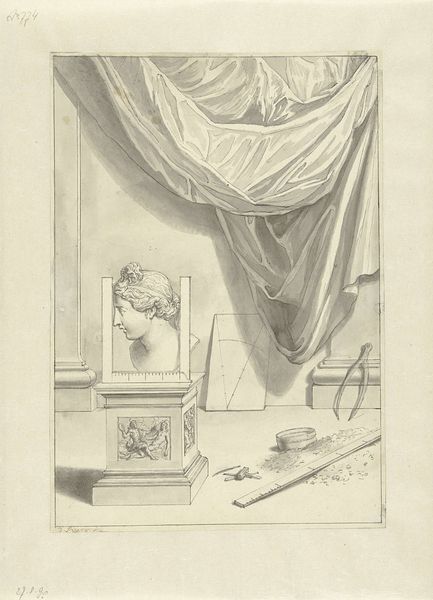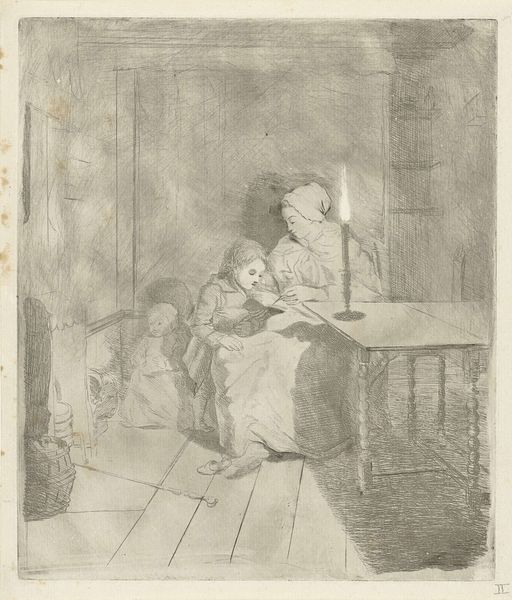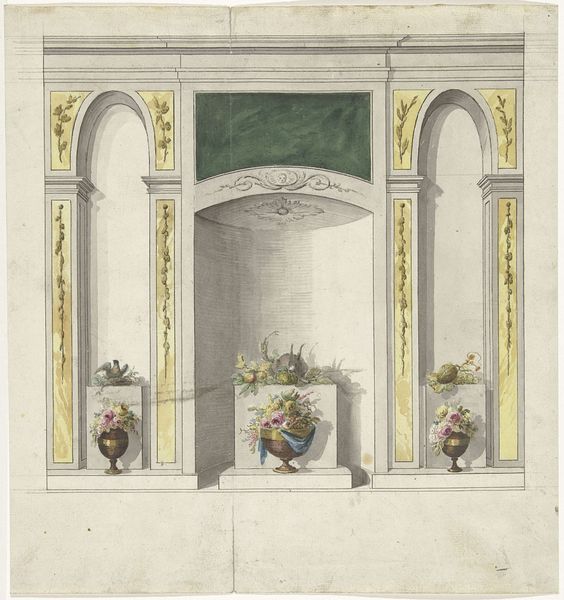
drawing, print, paper, engraving
#
drawing
#
neoclacissism
# print
#
paper
#
genre-painting
#
history-painting
#
engraving
Copyright: Public Domain
Curator: Welcome! We're standing before "The Laundress," an engraving dating back to around 1793, created by Julien et Moret. This print, rendered on paper, captures a moment in the everyday life of a woman at work. Editor: She looks…caught, somehow. Trapped, maybe? I can almost feel the chill of the stone against my back as she leans out that window, forever frozen mid-scrub. Curator: That feeling of constraint is interesting to consider within the context of the late 18th century. Prints like these gained popularity partly because they offered glimpses into the lives of ordinary people, reflecting evolving social sensibilities even while often romanticizing or moralizing these realities. Editor: It’s that tiny window of a world, isn't it? The way the interior darkens, almost framing her act, making this everyday work so…confined. Look at the hard lines of that window frame compared to her softened, curved form and costume! Curator: Exactly. There’s a duality here, isn't there? A neoclassical sensibility – that interest in form and idealization – colliding with a growing awareness of social realities. "The Laundress" occupies a fascinating space between genre painting and social commentary. Editor: Maybe there's hope? The open window and her connection to the outdoors bring some sort of possible escape? Her expression is impossible to discern! I guess viewers project whatever emotion they're feeling onto her, too, so who is the actual subject, the worker or the watcher? Curator: That tension you point to is powerful. As prints like this circulated widely, they shaped public perceptions. These were not passive objects. Editor: I'm suddenly aware of how heavy everything feels. Heavy stone, heavy laundry… And it just all circles back to how easily these stories of everyday struggle vanish, get overlooked, washed away. It is just a frozen instant; who would think we can get so much to talk about? Curator: And yet here we are, considering how those moments were represented and how they continue to speak to us today. Editor: Yes. It’s a potent reminder of the narratives art can whisper, of the social currents it can reveal if we take the time to listen.
Comments
No comments
Be the first to comment and join the conversation on the ultimate creative platform.
